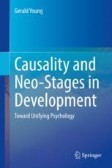Search
Search Results
-
Distractor-evoked deviation in saccade direction suggests an asymmetric representation of the upper and lower visual fields on oculomotor maps
The programming of rapid eye movements or “saccades” involves a large collection of neural substrates. The subcortical oculomotor center – the...

-
How does language affect spatial attention? Deconstructing the prime-target relationship
It is still unclear how spatially associated concepts (e.g., directional expressions, object names, metaphors) shape our cognitive experience. Here,...

-
Investigating the Influence of Autism Spectrum Traits on Face Processing Mechanisms in Developmental Prosopagnosia
Autism traits are common exclusionary criteria in developmental prosopagnosia (DP) studies. We investigated whether autism traits produce...

-
Need for cross-level iterative re-entry in models of visual processing
Two main hypotheses regarding the directional flow of visual information processing in the brain have been proposed: feed-forward (bottom-up) and...
-
The Locus Coeruleus: Where Cognitive and Emotional Processing Meet the Eye
The pupil offers a window into how arousal shapes the way we think, learn, and behave. Yet, arousal is a complex and multifaceted construct, leaving...
-
Do Bad People Deserve Empathy? Selective Empathy Based on Targets’ Moral Characteristics
The relation between empathy and morality is a widely discussed topic. However, previous discussions mainly focused on whether and how empathy...

-

-
The hidden arrow in the FedEx logo: Do we really unconsciously “see” it?
The FedEx logo makes clever use of figure-ground ambiguity to create an “invisible” arrow in the background space between “E” and “x”. Most designers...

-
Can the Stroop effect serve as the gold standard of conflict monitoring and control? A conceptual critique
The Stroop effect has been a key to the assay of selective attention since the time of the epoch-making study by J.R. Stroop almost a century ago....

-

-
Experimental and Longitudinal Investigations of the Causal Relationship Between Belief in a Just World and Subjective Well-Being
Belief in a just world (BJW) has been assumed to promote subjective well-being. The results of cross-sectional studies have been consistent with this...

-
From whom do animals learn? A meta-analysis on model-based social learning
Social learning via the observation of or interaction with other individuals can allow animals to obtain information about the local environment....

-
Avoidant restrictive food intake disorder: recent advances in neurobiology and treatment
Avoidant restrictive food intake disorder (ARFID) is an eating disorder characterized by persistent insufficient nutritional and/or energy intake....

-
Does food recognition depend on color?
Color is considered important in food perception, but its role in food-specific visual mechanisms is unclear. We explore this question in North...

-
Adaptation, Co** , Stress, and Development
The chapter situates the area of defense mechanisms in the wider field of adaptation, co**, and stress. Also, it presents a 25-step Neo-Eriksonian...
-

-
Emerging principles in functional representations of touch
The somatosensory system is fundamental to the formation and maintenance of coherent mental representations of the human body. Traditional concepts...

-
Representation Matters: Review and Examination of Demographic Matching Effects on Organizational Outcomes
Research suggests that the extent to which there is a demographic match between employees and important stakeholder groups (e.g., customers,...

-
(Ma)kin(g) Sympoietic More-than-Human Educational Futures
This chapter shares stories of creative ruptions, to think and do place-based education differently. We think-with Haraway’s (2016, Staying with the...
-
Direction-selective modulation of visual motion rivalry by collocated tactile motion
Early models of multisensory integration posited that cross-modal signals only converged in higher-order association cortices and that vision...

